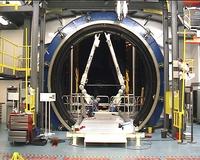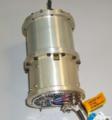
Manipulation Systems


 |  | | |
The European Robot Arm (ERA): a large manipulation system for the ISS
|
Space manipulation systems are designed to complement/replace
astronauts in some of the activities they do in orbit, such as handling
of space hardware (e.g. install, assemble, connect),
inspection and transport.
The use of manipulation systems allows:
- preventing danger to humans (hostile environment !)
- performing tasks too difficult for astronauts (large
masses, high precision and repeatability, large durations)
- concentrating astronauts on tasks they do best and avoiding
boring / time consuming / expensive (routine handling of experiment
logistics) tasks
- performing tasks which would not be attempted by humans for
reasons of safety/costs (e.g. geostationary servicing)
 |  |
The Geostationary Servicing Vehicle, studied by ESA, had 2 large robot arms
| |
Uses of Manipulation Systems
The most known Manipulation Systems are the big robot arms employed on the NASA Shuttle and on the International Space Station (ISS).
Many other Manipulation Systems have also been proposed for other Orbital Applications, such as the EuTEF and EUROBOT manipulation systems, still for the ISS and the GSV arms for Geostationary Servicing.
There have been however examples of robot arms also in Planetary Exploration. The 2 NASA Viking landers had robot arms equipped with a scoop to sample Martian soil. The British Beagle II lander, part of the ESA Mars Express mission, had a small robot arm.
 |  | | |
The first prototype of a DEXARM joint. DEXARM will feature 7 similar joints
|
Developments at the A&R Section
The A&R robotics section is currently developing a robot arm, called "DEXtrous robot ARM (DEXARM)" to be used as basic component for manipulation systems.
DEXARM is intended to be used for the EUROBOT system.
Last update: 2 October 2006


|

